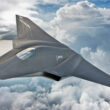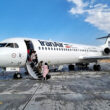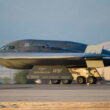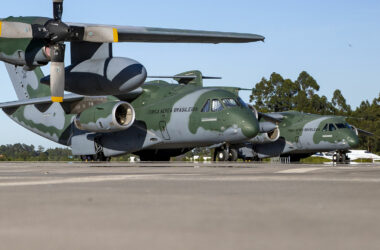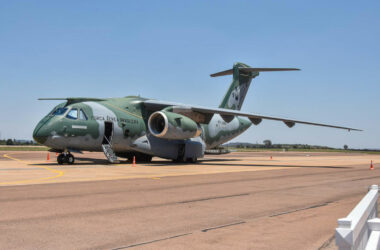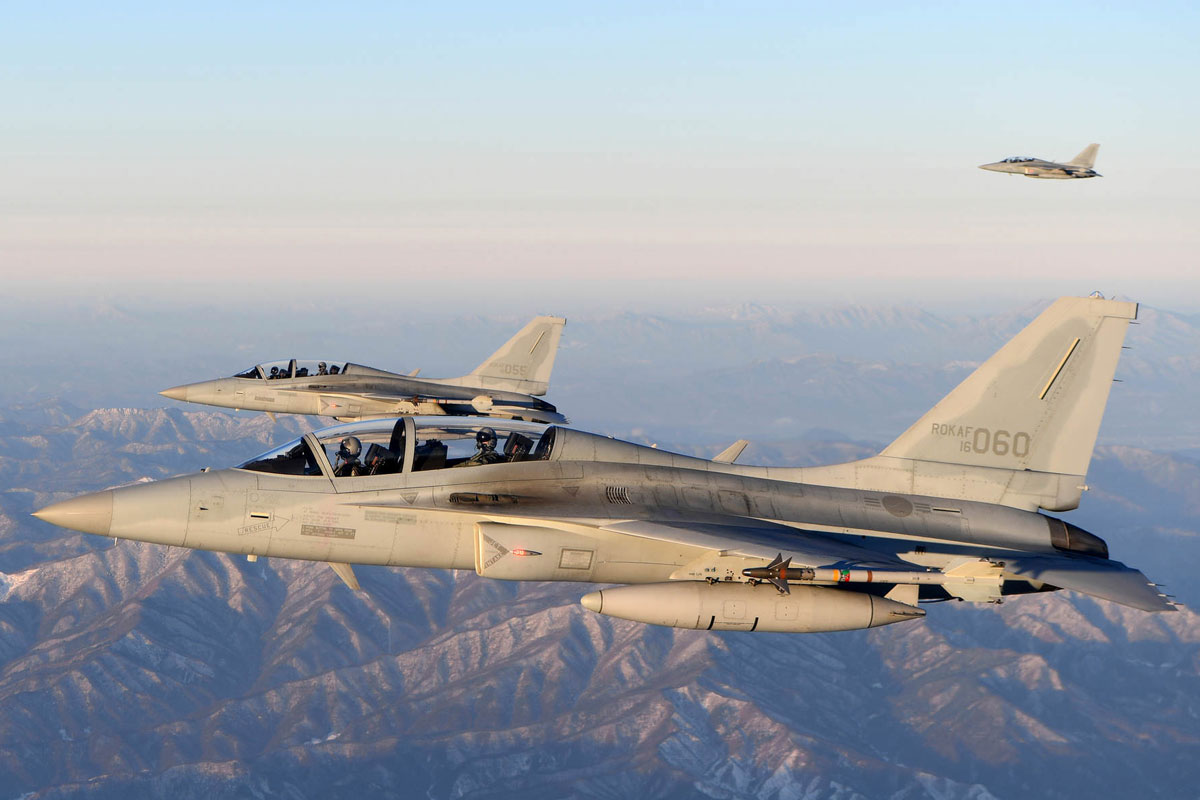The Chinese Navy’s Fujian aircraft carrier began its first sea trials in recent days, marking the first opportunity to see the massive vessel at sea.
The Chinese government released high-resolution images of the ship, which made it finally possible to compare the Fujian to its United States counterpart, the George R. Ford (CVN-78), the country’s most modern aircraft carrier.
Also known as “Type 003”, China’s new aircraft carrier is the result of a huge technological advance for the country. Until then, the People’s Army Navy (PLAN) had two vessels capable of operating aircraft, both derived from Russia’s Kiev class of ships.
Follow Air Data News: WhatsApp | Google News | Instagram | LinkedIn | Twitter | Facebook
The Liaoning (with 60,000 tons of displacement) and Shandong (66,000 tons) use the “sky-jump” ramp to launch their Shenyang J-15 fighters (a naval version based on the Sukhoi Su-27).

The method, however, limits the range and armament capacity of aircraft and that is why China decided to build the Fujian with catapults (CATOBAR), as on US and French Navy ships.
But the Chinese dispensed with the steam system to deploy electromagnetic catapults, which are more efficient and lighter. The Fujian carries three of these catapults, one less than the Gerald R. Ford, the world’s first aircraft carrier with the technology.
But like the US ship, the Chinese aircraft carrier has two of them in the bow and one on the port side – the CVN-78 has two in that location.
See other differences between them:
Size
Although the Fujian is much larger than its predecessors, it is slightly shorter (316 meters versus 337 m) and less wide (76 meters versus 78 meters) than the Gerald R. Ford. Furthermore, the CVN-78 displaces up to 100,000 tons while the Type 003 displaces around 80,000 tons.

Flight deck
The design of the Fujian’s flight deck closely follows Western lessons, with an angled landing area and a side island, but the Chinese aircraft carrier has only two elevators, one in front and the other behind the island, on the starboard side.
The US ships have three elevators, which indicates that the Fujian would carry fewer aircraft.
Aircraft
Fujian has not yet received any aircraft from its future flight wing, so it is not known exactly what it will look like. However, estimates indicate that the aircraft carrier will carry 24 J-15 fighters adapted to operate with catapults, in addition to at least 12 J-35, a stealthy 5th generation fighter similar to the F-35.
There will also be some Xian KJ-600 airborne early warning turboprops, which look like clones of the US Navy’s E-2 Hawkeye.

The Gerald R. Ford, like the Nimitz class ships, can carry almost 90 aircraft, including F/A-18E/F fighters, F-35 (from 2025), EA-18G, E-2 electronic warfare planes and C-2 transport, in addition to helicopters.
Propulsion
This is by far the biggest difference between the two aircraft carriers. Since the 1960s, the US Navy has only built ships of this type with nuclear propulsion, which allows them to sail for years before refueling is necessary.
PLAN, in turn, opted for steam turbines driven by diesel generators in Fujian. It is a reliable but limited system that requires the aircraft carrier to undergo frequent refueling.
Area of action
Although the Fuijan is currently the largest aircraft carrier in the world outside the United States, its range will not be comparable to the US Navy’s fleet.

Without bases spread around the world and with a fleet still small in this sense, the Chinese Navy is expected to have a regional influence for now. This scenario may change with the continued launch of new aircraft carriers, which are thought to be larger and with a capacity similar to the Gerald R. Ford.
The United States also continues to modernize its fleet of aircraft carriers and next year the second ship of the Gerald R. Ford class (John F. Kennedy, CVN-79) should be commissioned.



